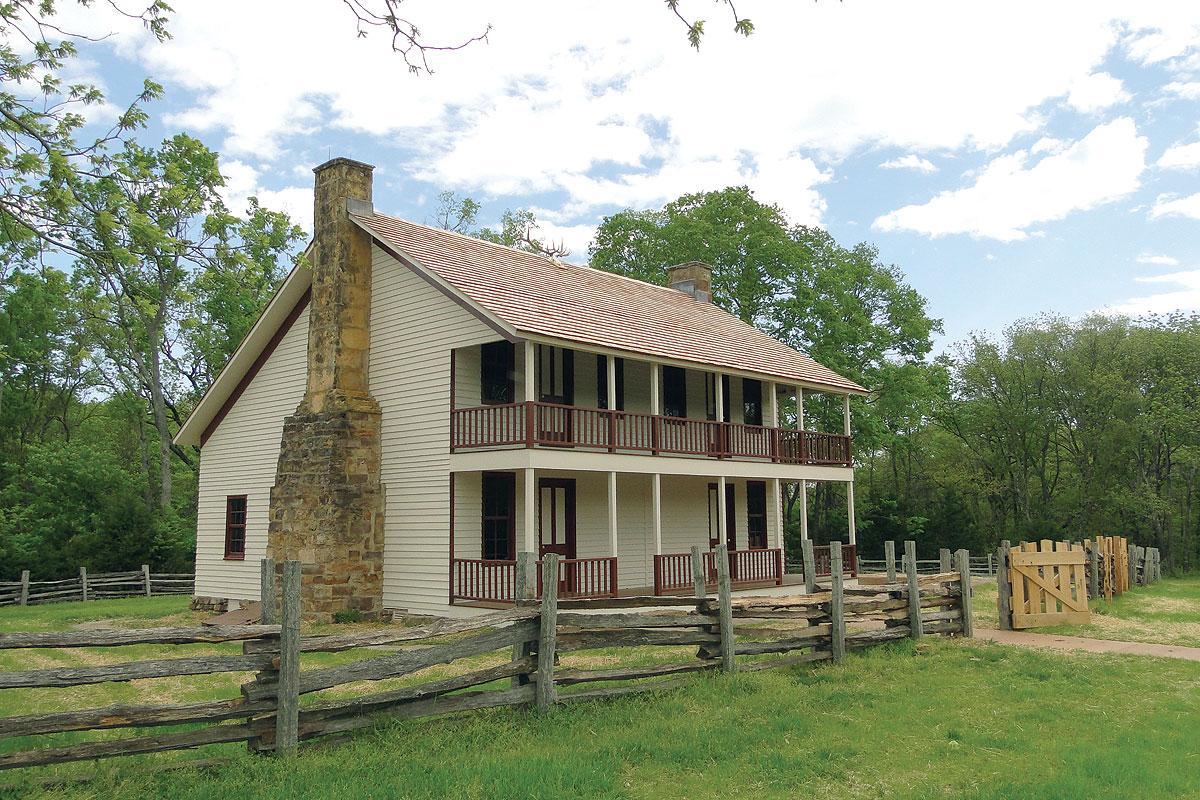
Pea Ridge National Military Park is made up of 4,300 acres
This story begins when Kerry Jones’ grandfather brought his seventh generation Arkansan and 5-year-old grandson to the Pea Ridge National Military Park in Garfield, Ark.
Young Kerry was awestruck by the ranger’s flat top straw hat and remembers thinking he absolutely wanted that job because the hat was so cool.
“My grandfather loved national parks and my grandmother loved history so working at this part time for 12 years across the country before gaining full-time status last year was more than worth it. I earned both a bachelors’s and a master’s in history to ensure I would be highly qualified when I finally got the chance to be full time. Then I applied exactly where all this began and couldn’t be happier,” explained Kerry.
The National Park Service, which is under Department of Interior, has 419 parks, but the Pea Ridge National Military Park is not only the fifth largest out of 25 Civil War-related battlefields, but has the distinction of having its 4,300 acres purchased and donated by local residents several years before the park opened in 1956.
Among those instrumental in making this happen were the Benton County Historical Society and Alvin Seamster, the mayor of Bentonville.
Two engagements were fought at the battle at Pea Ridge, the first at a small village called Leetown and the second at the nearby Elkhorn Tavern. The locale was significant because it held the crossroad of two critical thoroughfares: Telegraph Road, which was part of the Butterfield Overland Stage Route and Huntsville Road.
“This battle, only two days long with engagement sites only a few miles apart, helped save Missouri for the Union,” explained Kerry.
Both Missouri and Arkansas remained under Union control for the remainder of the war. Though outmanned and outgunned, the Union prevailed due to better logistical and tactical leadership. Before the battle, Missouri contributed both men and supplies to both sides and Arkansas remained pro-Confederate in spirit after it.
Pea Ridge Battlefield Park is bounded by a 7-mile car loop that takes visitors to 10 sites and an additional site off the park’s grounds. The tour can be supported by an optional audio feature for sale inside the park museum. The park also contains a hiking trail, a horse trail and an unpaved bicycle trail, as well as recreational opportunities. The entire park exhibits employee-built replica fencing to indicate Civil War property boundaries. In addition, a surprising number of cannons are distributed throughout the park and highlight strategic locations. Site 4, called the Leetown Battlefield, contains six cannons in a line and depicts the scene of 19-year-old Capt. William Black who delayed a fierce Confederate assault by shooting at the encroaching enemy until he fell wounded. His efforts gave the artillery men enough time to save four of six cannons from capture. Capt. Black was one of only four men during the campaign to be awarded the Congressional Medal of Honor.
“This battlefield is rich in stories and learning opportunities,” said Kerry.
Taking its educational responsibility seriously, the park offers attention grabbing options. Field trips for students include a musket firing program and an interactive cannon program as well as a scavenger hunt accompanied by student worksheets. Because field trips are not available to all students, the park developed both Union and Confederate trunks that schools can rent for two weeks so multiple classrooms can take advantage of their contents. Inside are Civil War uniforms including boots and other daily items such as cards and eating utensils and drinking vessels.
The National Park Service is devoted to land and wildlife restoration, and preservation with Pea Ridge National Military Park leading the way in developing effective methods. These methods include controlled burning of grasslands to promote native warm season grasses, systematic removal of plant life, such as cedars that were not part of the Civil War landscape and selective use of herbicides. Land restoration means increasing the natural habitat of declining species like the bobwhite quail and songbirds as well as a variety of fish and mammals.
Pea Ridge Battlefield Park hosts 172,000 visitors a year. The visitor center which includes both a bookstore and museum is open from 8:30 a.m. to 4:30 p.m. daily, except Thanksgiving, Christmas and New Year’s.
The park tour roads and trails are open from 6 a.m. to dusk year-round with tour stop number one serving as a picnic area though no camping is allowed. Camping facilities, however, are available at Beaver Lake 10 miles away.







